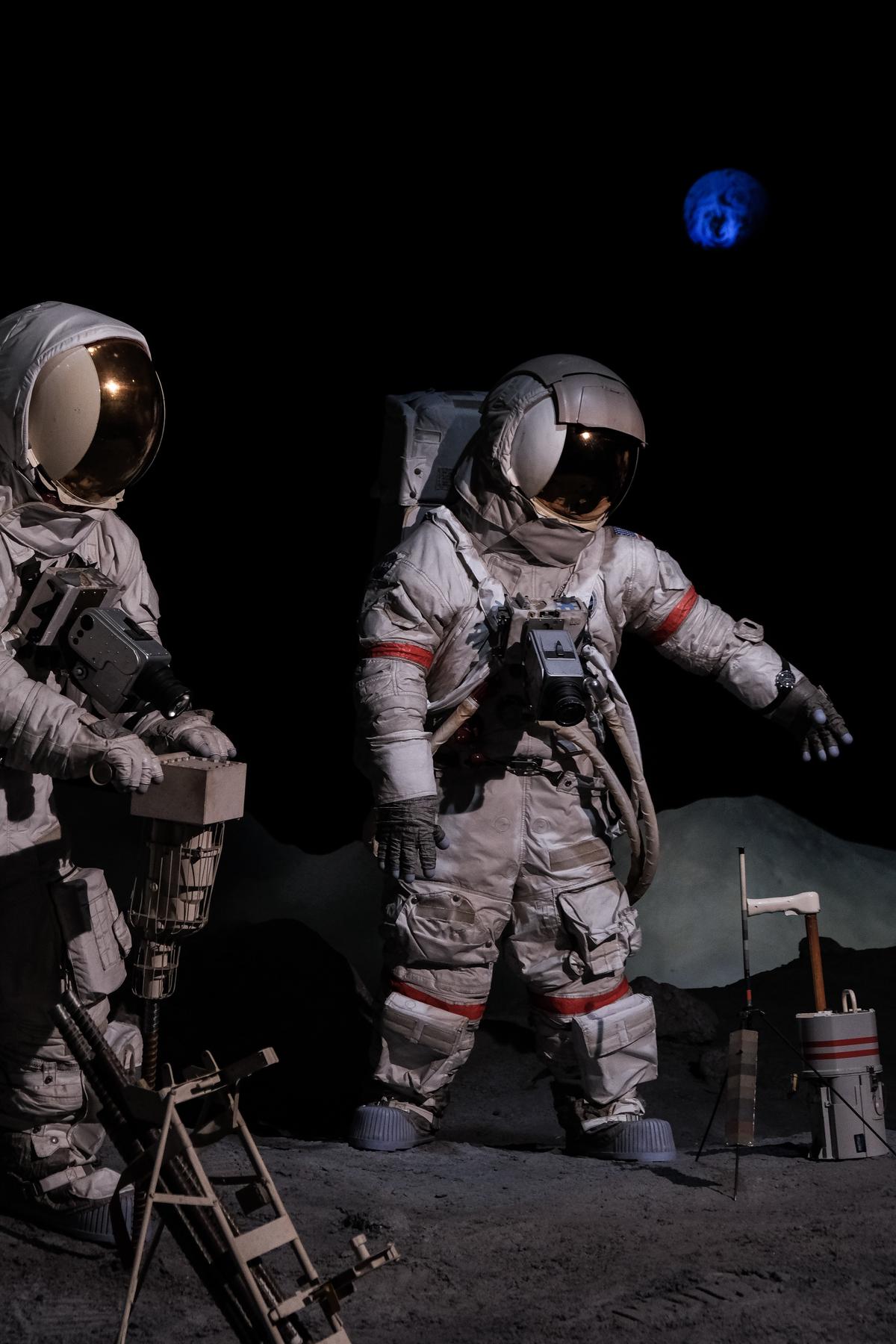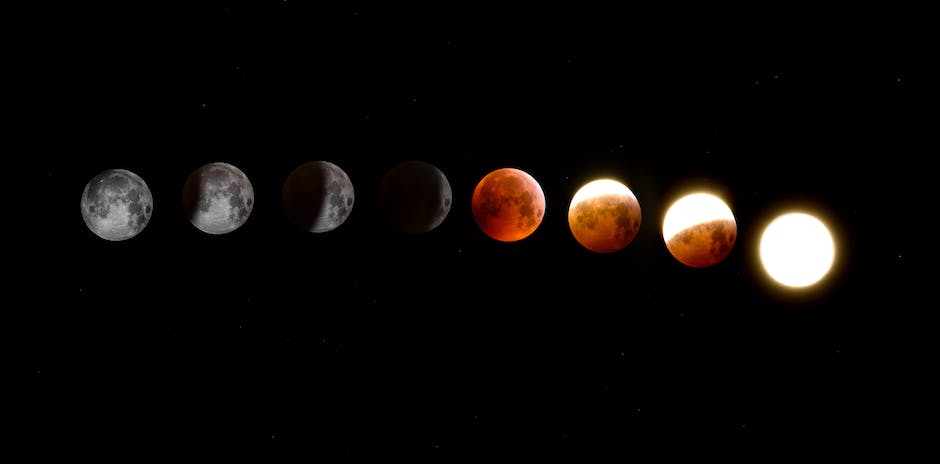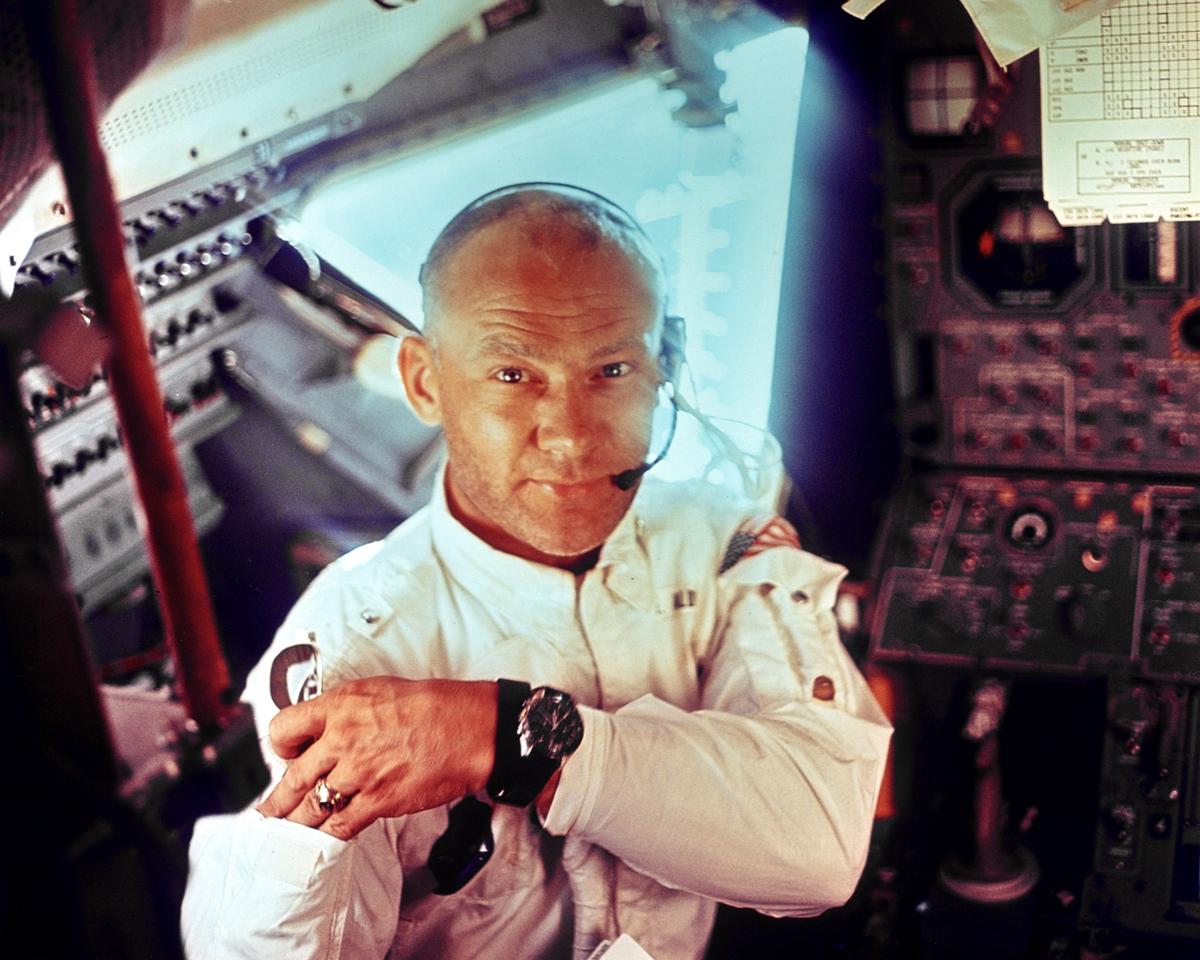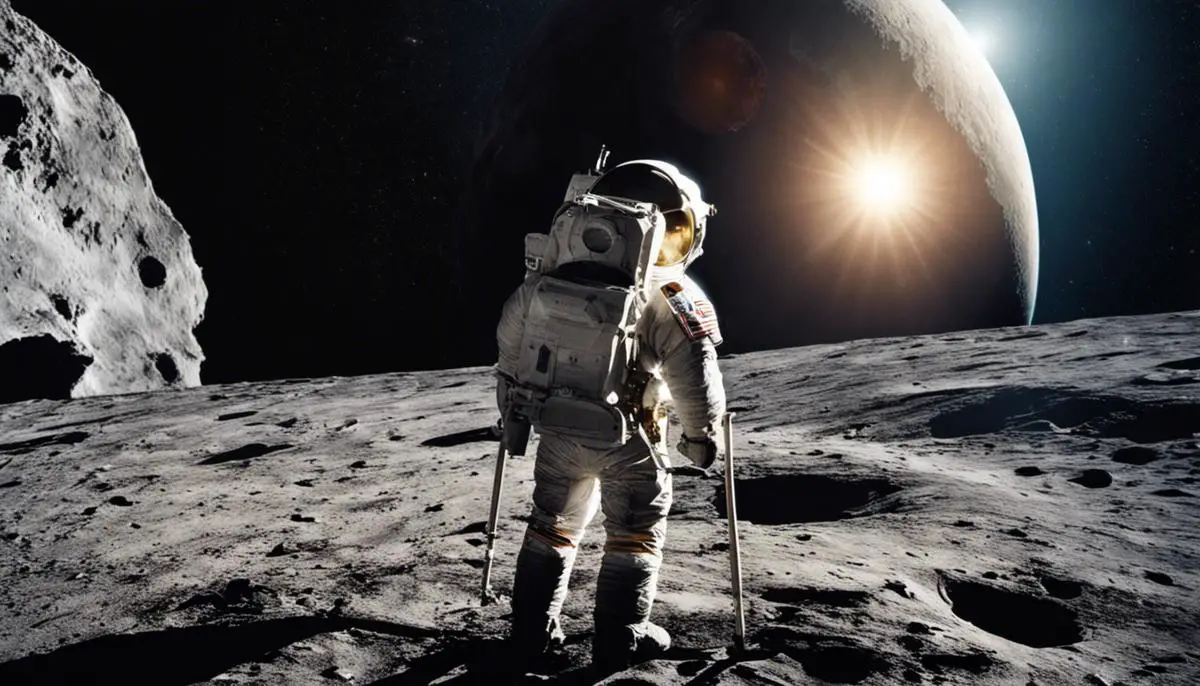Imagine a moment in history, when man first set foot on an extraterrestrial surface, marking an unprecedented milestone in human exploration. This became possible due to the Apollo missions, a series of spaceflights undertaken by NASA between the 1960s and 1970s, forever changing our perspective towards the universe and our place within it. Set against the backdrop of the Cold War era, these missions not only testified to the zenith of human determination and ingenuity, but also marked a monumental victory in the Space Race between the USA and USSR. It’s not just about the men on the moon, but the indelible impact and legacy left behind, the controversies it stirred up, and the diversified technologies it fostered making it a vital chapter in the annals of human achievement.
Contents
The Historical Context and Importance of the Apollo Missions
The Advent of the Apollo Missions
The Apollo mission series, a significant part of the mid-twentieth-century history, were operated by NASA, the National Aeronautics and Space Administration. These missions germinated from the audacious claims made by President John F. Kennedy during May 1961, asserting that the USA would successfully send an astronaut to the moon and back safely within the decade. Consequently, the Apollo program was initiated, replacing the ongoing Project Mercury, and aimed at achieving crewed lunar landing, thereby advancing the USA’s position in the ongoing Space Race against the Soviet Union.
Significance in Context of the Space Race
The geopolitical significance of the Apollo missions couldn’t be overemphasized. Rooted in the Cold War, the rivalry between the USA and the USSR extended to space exploration. The Space Race was not only technologically and scientifically motivated, but also heavily imbued with propagandist elements. After the successful launch of the Sputnik by the USSR, which marked them as frontrunners in the space race, the USA faced increasing pressure to outperform. The Apollo missions, therefore, represented a response to Soviet advances and an effort to reestablish American superiority in the cold war context.
First Steps on the Moon: Apollo 11
After a series of uncrewed and crewed missions, the historic moment arrived on July 16, 1969, when the Apollo 11 mission launched. The crew, composed of astronauts Neil Armstrong, Michael Collins, and Buzz Aldrin, executed the lunar landing on July 20, as millions watched telecasts of the landing. This marked the first-ever human step on the lunar surface, with Neil Armstrong’s famous remark, “That’s one small step for [a] man, one giant leap for mankind.” The successful Apollo 11 mission not only fulfilled Kennedy’s vision but also signified a monumental achievement in human space exploration and a significant victory for the USA in the Space Race.
Later Apollo Missions and their Contributions
The Apollo program continued after Apollo 11, featuring six manned missions to the moon in total. The scientific experiments carried out during these missions greatly contributed to our understanding of the moon. They brought back a total of 842 pounds of lunar rocks, which revealed many facts about the moon’s structure, geology, and origin. The missions also deployed several lunar surface experiments, such as the Lunar Ranging Retroreflector, which still provides critical data on the Earth-Moon distance.
Apollo Missions: Legacy and Influence
The Apollo missions marked an end to the Space Race, setting a new standard for human space exploration. It propelled considerable advancement in various technical and scientific disciplines, leading to innovations in engineering, computer technology, and telecommunications. The missions popularized space exploration, sparking public interest, and shaping cultural and societal perspectives towards space. The influence of Apollo missions reached farther than the moon, deeply imprinting on human consciousness and igniting ambitious space exploration endeavors.
Apollo Missions: Legacy Lives On
The Apollo missions may have ended in 1972, but their legacy is far from over. Since their closure, NASA has been working towards rekindling the spirit of these missions and revitalizing lunar exploration. In 2017, NASA launched the Artemis program, intending to send humans back to the moon by 2024. This program is not merely a symbol of nostalgia for the Apollo missions, but a stepping stone toward bold ambitions such as future Mars missions and exploration of deep space. Thus, the Apollo missions’ lasting influence is carving out the future path of human space exploration.

Photo by joehan330 on Unsplash
Key Milestones and Technologies of the Apollo missions
Apollo Missions: The First Leap into the Universe
The long shadow of the Apollo missions from 1961 to 1972 continues to stretch over the history of human space exploration, marking unparalleled milestones. The program’s high point occurred on July 20, 1969, with Apollo 11 successfully landing Neil Armstrong and Buzz Aldrin on the lunar surface. As Armstrong took his first steps on the moon, with Michael Collins maintaining a lunar orbit high above, he immortalized the moment with his statement—a small step for a man, a giant leap for mankind. This notable achievement underscores the Apollo missions’ significance and their role in advancing us into the cosmos.
The Other Apollo Missions
Yet, Apollo 11 was only one chapter in the larger Apollo saga. Apollo 8 marked two significant firsts: leaving the earth’s orbit and going into lunar orbit. The command module, piloted by Frank Borman along with crew members James Lovell and William Anders, made ten lunar orbits in 20 hours. No landing was made, but the ‘Earthrise’ photo taken by the crew offered a humbling perspective on our home planet.
Apollo Innovations and Technologies
In the case of Apollo 13, despite it being termed a ‘successful failure’ due to an explosion onboard preventing the planned lunar landing, it remains a testament to NASA’s ingenuity. The ground team in Houston famously improvised a solution utilising the lunar module as a lifeboat, leading to safe return of the three astronauts.
Apollo Innovations and Technologies
Apollo’s legacy extends beyond its missions. The technological innovations made during this era were revolutionary and their impacts are still felt today. For instance, the design of the Apollo spacecraft led to the development of future space shuttle vehicles. The Lunar Roving Vehicle, colloquially known as the ‘moon buggy,’ was used on the last three Apollo missions, allowing astronauts to explore more of the moon’s surface.
Developments in computing technology were also critical. The missions necessitated the creation of the Apollo Guidance Computer (AGC), one of the first computers to utilize integrated circuits (microchips). This major advancement paved the way for the technological revolution that gave household electronics such as computers and smartphones.
The Apollo Effect in Contemporary Times
Today, the Apollo missions continue to inspire and influence space exploration. NASA’s upcoming Artemis program plans to return humans to the moon by 2024 using an approach that leans heavily on Apollo’s legacy. This time, however, the plan is not just to visit but to establish a sustainable, long term human presence on the moon.
Inventions from the Apollo era also persist in everyday life. Smoke detectors and insulation materials, even advances in water purification systems, are credited to technology developed during the Apollo missions.
The Enduring Legacy of the Apollo Missions
The Apollo missions resonate deeply in our cultural consciousness even today, underlining the unquenchable human spirit of exploration and discovery. They have instilled a fascination for the infinite expanses of space, inspiring uncountable books and movies spun from the fabric of science fiction. Moments like the Earthrise and lunar landings have served as muse for a multitude of creative minds. Apollo’s footprints on the moon etch mankind’s bold foray into the cosmos. “Moon landing” and “Apollo” continue to echo in our vocabulary as symbols of our species’ potential for greatness, even as we approach the half-century mark since the last mission.

Controversies and Conspiracies Surrounding the Apollo Missions
Controversy Surrounding the Apollo Missions: The Moon Landing Hoax Theory
Yet for all their iconic status, the Apollo missions remain dogged by one major controversy – the ‘Moon Landing Hoax’ theory, a narrative positing that the United States staged the lunar landings in order to claim victory in the Space Race against the Soviet Union. The proponents of this theory question the validity of the Apollo mission evidence, casting doubt on the absence of stars in the lunar sky photos, the ripple-less flag, the shadow discrepancies, and the alleged inferior quality of the lunar soil footprints. However, science has overwhelmingly debunked these arguments, providing explanations rooted in the unique conditions of space photography, properties of lunar soil, and the absence of atmosphere on the moon.
The Van Allen Radiation Belts
A subset of these hoax claims lies in the question of how the astronauts traversed through the Van Allen Radiation Belts, intense fields of radiation surrounding the Earth that could be lethal over a sustained period. Critics suggested that NASA lacked the technology to protect the astronauts from this radiation. However, NASA has demonstrated that the fast-moving Apollo spacecraft spent minimal time within these belts, reducing the exposure and associated risks. The spacecraft’s construction and the astronauts’ space suits offered additional protection, allowing safe passage.
Deaths of Apollo Astronauts
Adding to the controversy, some conspiracy theorists have pointed at the untimely deaths of certain Apollo astronauts. They allege these deaths were part of an elaborate cover-up to prevent leaks about the ‘fabricated’ lunar landings. This claim, however, lacks substantial evidence. Most of these astronauts died from natural causes or accidents, displaying no clear pattern that would suggest foul play.
Apollo Moon Rock Anomalies
Another controversy has emerged from the analysis of moon rocks brought back by the Apollo missions. Several labs worldwide examined these samples to confirm their extra-terrestrial origin. However, suspicions arose when some tests revealed terrestrial age dating and composition. NASA reassures that the moon’s surface is bombarded by cosmic rays, which could alter age dating results. Additionally, the moon and earth share a common origin, explaining the similar composition.
Modern Perspectives
Today, almost half a century later, amidst the advancements in technology and space exploration, these controversies continue to be revisited. High-resolution images of the lunar surface from recent lunar missions and telescopes have demonstrated the presence of the Apollo lander and footprints, pushing back against hoax claims. Yet, the persistence of these conspiracies suggests a deep-rooted public distrust and highlights the need for greater openness and transparency in space exploration.
Present-Day Apollo Missions
The Apollo missions have returned to the forefront of current discussions on space exploration, prompted by a resurging enthusiasm towards exploring the moon. The adventurous spirit of the Apollo era is being recaptured by NASA’s Artemis program, which ambitiously plans to deploy “the first woman and the next man” on the Moon by 2024. These upcoming missions hold the promise of carrying forward the legacy of the Apollo program, exploiting contemporary technological advancements and vital experience gathered from the historic missions. The ultimate goal is to set up a long-lasting human presence on the lunar surface.

Photo by vorosbenisop on Unsplash
The Modern Legacy and Future of the Apollo Missions
The Legacy of Apollo Missions in Pioneering Space Exploration
Conceived in the intense rivalry of the Cold War between the United States and the Soviet Union, Apollo missions formed an incredible display of the technological prowess possessed by these superpowers. Yet, these missions embodied more than just a fleeting exhibition of supremacy – they redefined human comprehension of space and our position within the cosmos. They set the trajectory for future expeditions into the infinite space beyond the confines of the Earth. The triumphant landing of Apollo 11 on the moon symbolized a quantum leap in space exploration, showcasing an unprecedented illustration of human capabilities and inventiveness.
The Apollo Legacy Today
Even today, the legacy of the Apollo missions resonates with our modern understanding and approach to space exploration. The lessons learned, and the technologies developed during these pivotal missions, serve as the bedrock upon which modern space agencies operate. Techniques perfected during Apollo, such as rendezvous and docking procedures, remain instrumental in current-day procedures, most notably in International Space Station operations. Likewise, Apollo’s challenges and triumphs have shaped the lexicon of risk management and contingency planning in space missions.
The influence of Apollo missions extends beyond technological feats; it also framings our socio-cultural perspective on space. After Apollo 11, the moon was no longer just a celestial body shining in our night sky; it became a tangible destination, accessible by mankind. It served to both humble and inspire, levelling our perception of cosmic scale and infusing generations with dreams of extraterrestrial vistas.
The New Era of Space Exploration: SpaceX and Beyond
The Apollo missions have also deeply influenced the new era of private space enterprises, most notably SpaceX. From its infancy, SpaceX has showcased an ambition reminiscent of the Apollo era, with the audacious goal to make life multiplanetary. With the success of their Falcon and Dragon models, and the ongoing development of the Starship spacecraft intended for lunar and Martian missions, SpaceX appears to be building directly upon the legacy of Apollo. Notable is the company’s unflinching acceptance of failure as a learning opportunity, reflecting the approach utilized in the Apollo missions.
The Future of Moon Missions
Looking ahead, it seems that the Apollo missions were an overture to a symphony still being written. NASA’s current Artemis program echoes of Apollo, proposing a return to the lunar surface, but with an ambition intensified: to create a sustainable human presence by 2024. Strategically, the moon serves as a testbed for further space exploration, offering opportunities to practice surface operations, test technologies and evaluate habitation concepts before voyaging to more distant celestial bodies.
China, too, has established an impressive lunar program, deploying rovers to the moon’s far side. Russia has expressed intentions for a crewed lunar mission within this decade as well. This emergent lunar focus amongst global space agencies is a testament to the lasting legacy of Apollo.
The Apollo missions, therefore, continue to serve as a beacon, guiding humanity’s course towards new frontiers. They defined the foundational principles of space exploration, proving the practicality of reaching other celestial bodies. No doubt, their spirit of adventure and innovation will persist in future moon missions and beyond, as we continue to chart the unknown expanses of the cosmos.

The Apollo missions, while an artifact of the past, continue to resonate in the present, setting a yardstick for human endeavors in space exploration. They paved the path for newer agencies like SpaceX, leading the charge in the contemporary era of space exploration. As we gaze upon the moon today, we not only remember that ‘giant leap for mankind’, but also eagerly anticipate what the future beholds – from a planned return to the lunar surface to journeying even beyond, perhaps even to Mars. The Apollo narrative underscores our insatiable curiosity, indomitable spirit, and the inexorable march towards unveiling the mysteries of the cosmos.

With a passion for unraveling the mysteries of the moon, Dr. Luna Sterling is a highly-respected astrophysicist, a dedicated lunar enthusiast, and a captivating blogger. After earning her Ph.D. in Astrophysics from the Massachusetts Institute of Technology (MIT), she served as a lead scientist and mission planner for NASA, contributing significantly to various lunar missions.
For over two decades, Luna has been at the forefront of lunar science, pushing boundaries and pioneering discoveries that have enriched our understanding of the moon’s geological history. However, it’s her infectious enthusiasm for all things lunar that truly sets her apart.
In an endeavor to bring the moon closer to everyone, Luna started her blog, “Luna’s Lens: A Closer Look at the Moon.” With this platform, she offers a unique blend of intriguing moon facts, updates on lunar missions, and personal anecdotes from her experiences in the field, all told in an engaging and accessible manner.
Luna’s unique blend of scientific expertise and warm, humorous writing style has transformed complex astrophysics into compelling narratives that captivate her audience. As a gifted communicator, she leverages her knowledge and experience to relate scientific facts to everyday life, thus making her blog a must-read for both seasoned space enthusiasts and curious newcomers.
Interactive and inviting, Luna frequently encourages reader engagement through thought-provoking discussions and a monthly ‘Ask Dr. Luna’ feature, where she personally answers questions about the moon and space exploration. A celestial storyteller at heart, Dr. Luna Sterling’s passion for the moon is as vast as the cosmos she explores, making her an invaluable beacon in the world of lunar science.
